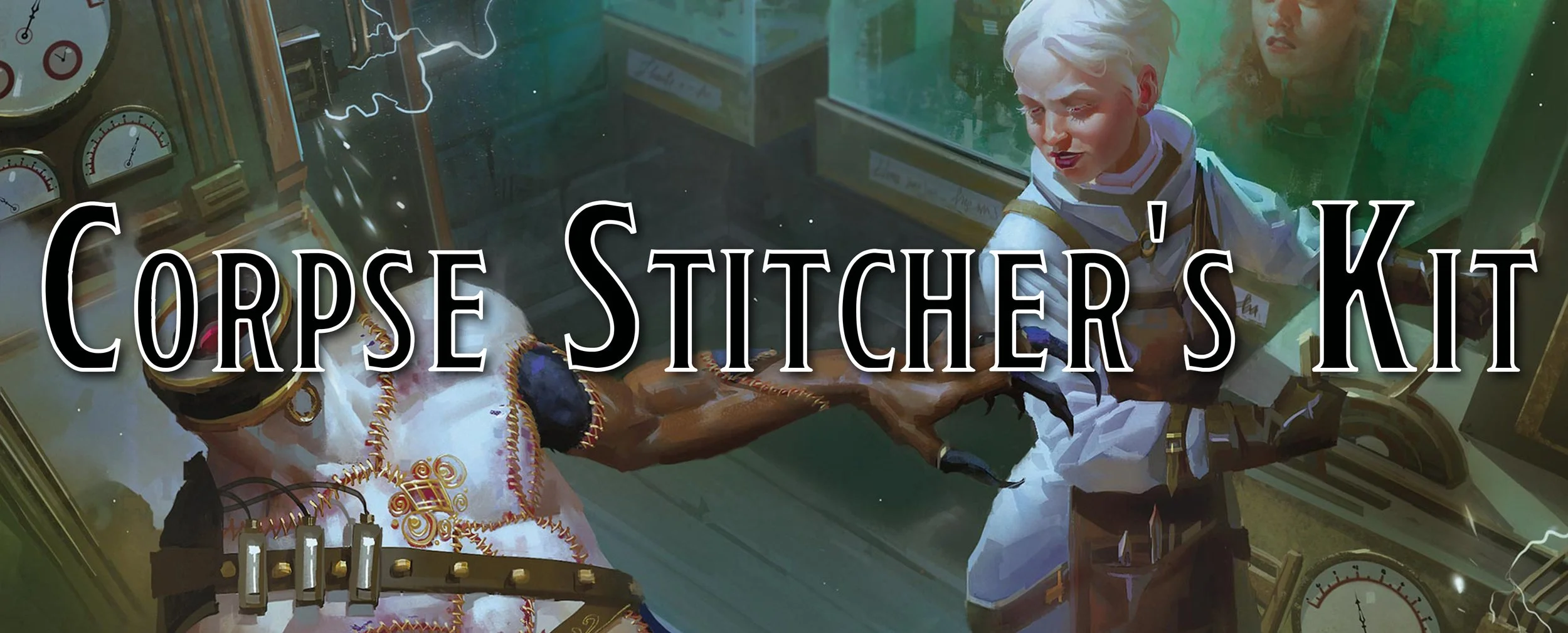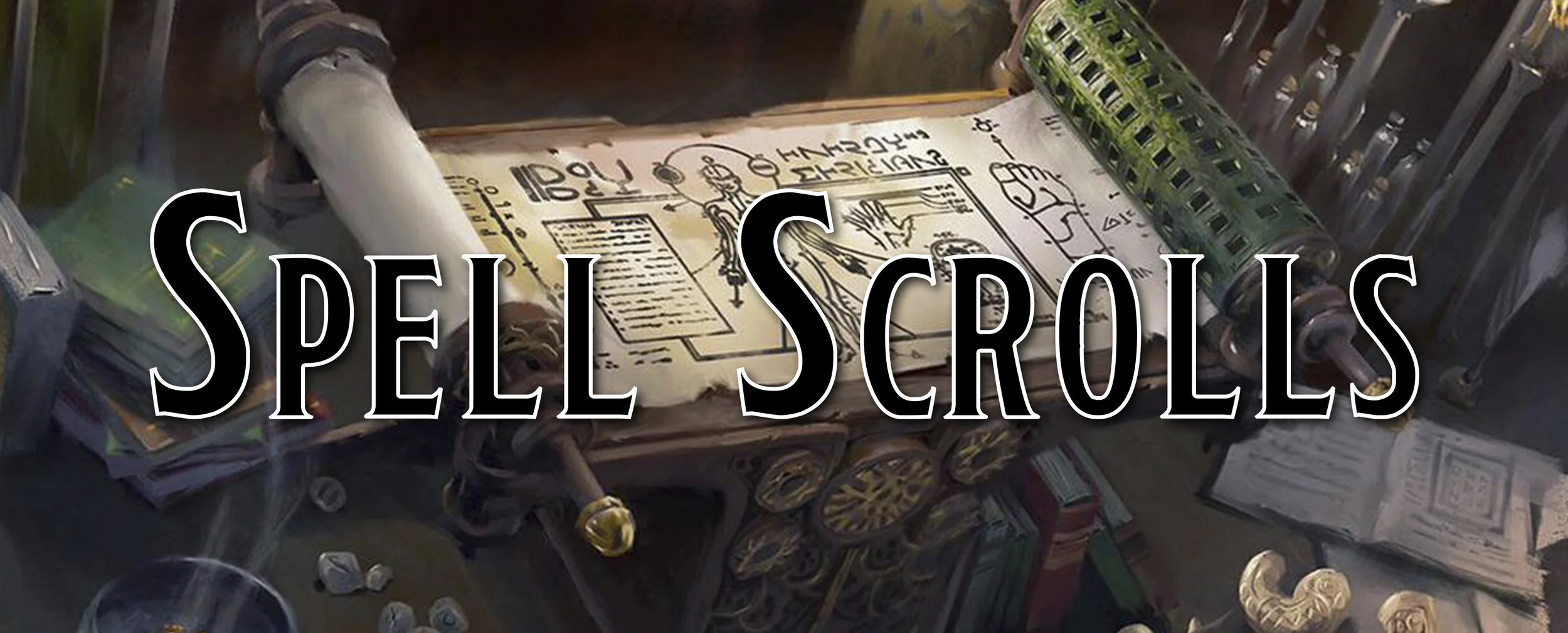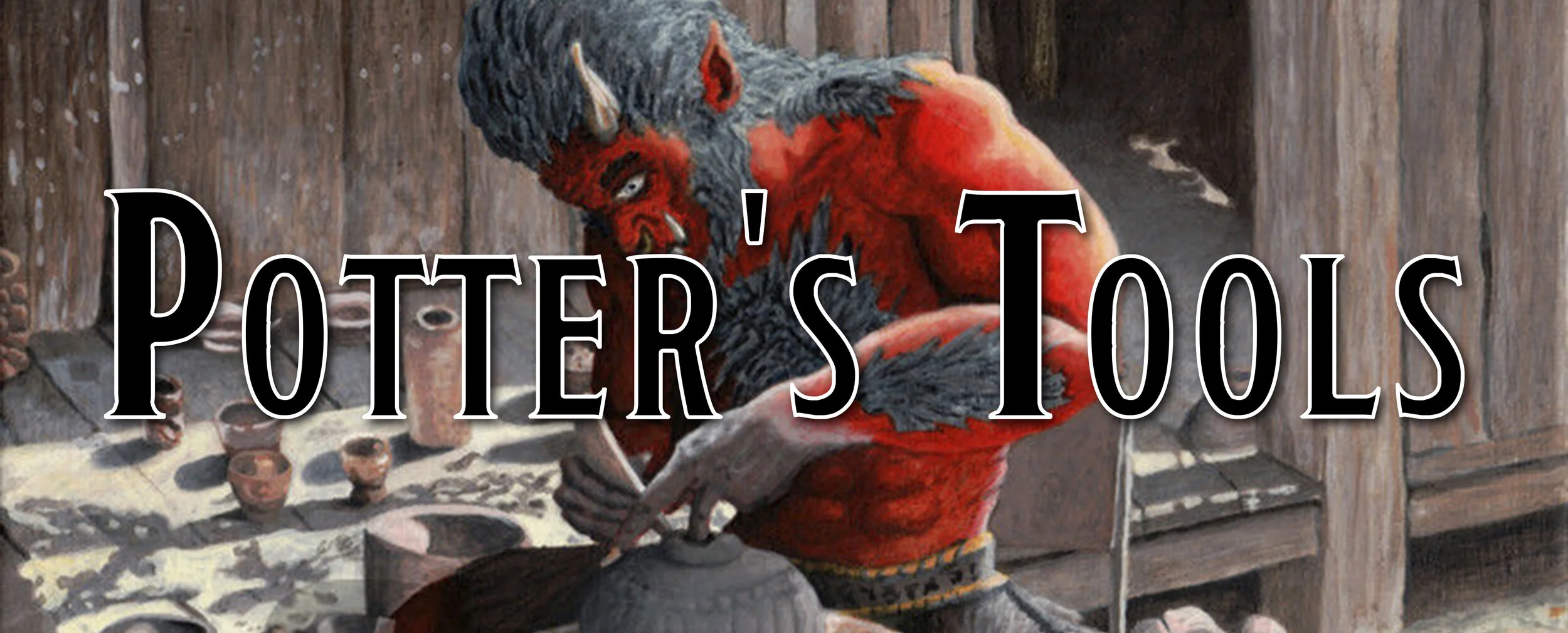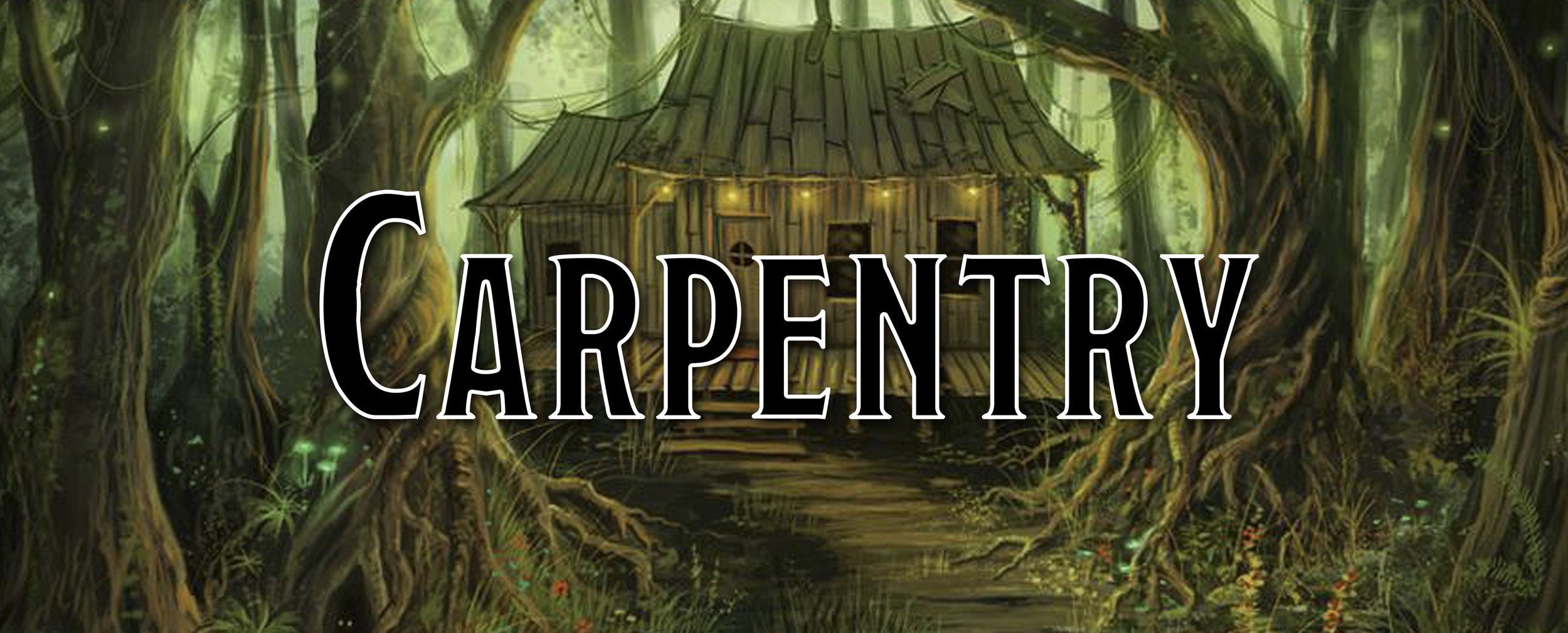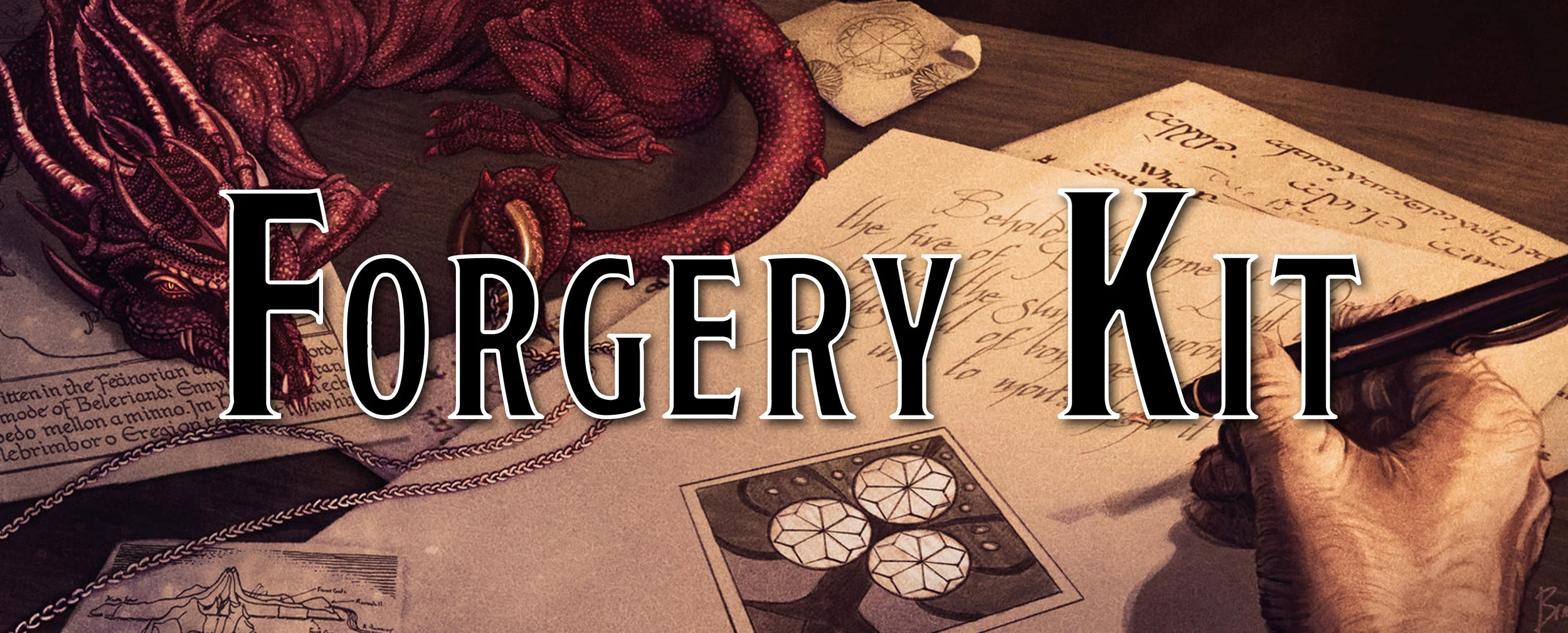More Tools for 5e: Snarecrafter Tools
Sometimes you want to create the perfect trap to really ruin your opponent’s day, and on those days, it's good to know how to make a perfect snare. I like the idea of traps and snares, and when I’ve been the player, I’ve often thought about what I could do. Unfortunately, some tables just aren’t very good at the ‘draw them in’ tactics and are more into rushing into a battle and bashing heads up close.
I shouldn’t be too surprised. If you flip through the Player’s Handbook, all of the information provided about traps is how to avoid, detect, or resist traps. Well, that’s not wholly accurate, they do provide one trap available to players, the hunter’s trap - but that sucks and isn’t worth mentioning… alright, fine, they also have spells that act as ‘traps,’ but they aren’t portable in the least and are more for the DM to use on the players.
So to fix that, I’ve gone ahead and made a new tool for players to learn!
For those who don’t care about the nitty-gritty:
For best results in GM Binder, use a Chrome Browser
Snarecrafter Tools
For those who are excited by the idea of trapping their prey, snares can be powerful tools. Most of the time it is used against the party, typically from a bunch of industrious kobolds with way too much time on their hands in a bid to prevent a bunch of adventurers from destroying everything they have created. It's tough being a kobold. You eat one baby and now the entire village is in an uproar about the kobold infestation and calling in adventurers to wipe out your entire clan, the kobold eggs, and maybe the baby dragon you treat as your god. To prevent them from hurting you and your life, you create a bunch of traps, which only seem to make them angrier. Weird how that works.
If you were an adventurer in this situation, you might have liked to give the kobolds a taste of their own medicine. You might find it funny if a kobold was launched 30 feet up in the air, fell into a pit trap, or tried to open a chest and got a poisoned needle in it.
Crafting Snares & Traps
The basic idea behind this tool is that snares and traps are portable. You, the crafter, need to be able to take your traps with you and deploy them where you want. Being able to create a trap does nothing for you if you are constantly on the move, so having portable traps can be quite a boon. These traps are all built to be portable and then the character must then set them up wherever they want. This does mean that some traps, like pit traps, take longer to set up, but other snares are crafted so that they can be deployed with a single action.
The idea behind all of this is that sometimes a player doesn’t have time to plan out an elaborate trap but still wants to be a trap-master. Since they build these traps outside of combat and bring those traps with them, they can easily build up their traps and still use them in combat. The options they have for traps in combat expand greatly even if they just have a 10-minute warning, as they can quickly set up their trap and then lie in wait when it gets activated. This allows the players to further strategize about how to set up traps and how to face their enemies, which can make for more interesting combats.
Materials
Every trap requires materials and a material price is offered if time is of the essence for a crafter. If they don’t wish to spend the gold, maybe because they are a lowly level 1 character who spent all their money on a treasure map from a guy with a peg leg and an eyepatch, then they can spend longer on the time to craft a trap as they scrounge up the materials needed. This might not always be possible, like if they need wood for their trap but are in the plane of earth where there are only diamonds and amethysts, but in other situations, like a forest, it could be possible. This would be up to the DM’s discretion, but it does make it so that the player must spend five times as long creating their snares. It’s not a bad trade-off if they don’t have or don’t want to spend the money and they can end up with their traps being made out of weird materials and providing their trap-making with some personality. Maybe they only make traps out of beehives, players are weird.
Detecting Snares & Triggering Them
This does beg the question, how do your precious monsters detect these traps and possibly trigger them? Every snare is built to appear to be innocuous, or else there is no point in building them since you can easily avoid them. This makes it so that you’ll be relying on the monster’s passive perception against the Snare Save DC of the crafter. For some crafters, this might mean they get a lot of monsters since the DC is based on intelligence. A monster only detects a snare once they are within 10 feet of it, so there is some minor benefit of the trap as a monster first has to get close to it, and then readdress their plans if they can notice it.
If a monster sees the snarecrafter set the trap, well, they get a +5 bonus to see the trap. For some monsters, that might be enough to spot the trap, though some really smart ones might just decide to not go over there to begin with because nothing good happens when adventurers are concerned. On the other hand, some monsters are really not perceptive, or don’t have a high enough intelligence to get that bonus (DM discretion) and will just walk on through and trigger that trap.
Once a creature steps into the space of the snare, it immediately goes off with all of its effects. This can be a bad time to be a monster as the floor suddenly disappears into a 100-foot pit, a javelin gets launched at their face, or the ceiling collapses on their head - maybe all 3 at the same time. It’s a dangerous job being a mook.
Snaring & Trapping
That’s the basis of being a snarecrafter. You create portable traps; some require a bit of setup time, but many can just be laid down, and you get to watch with delight as they are triggered and your opponents fall before you. If you are interested in creating more, I do provide some variant rules at the end of the homebrew, going over DCs, costs, damage, and more so you can create your snare-ific ideas.
For DMs, if you are interested in checking out more snares, I highly recommend checking out the Pathfinder 2e Core Rulebook, which helped inspire some of the rules in this, as well as flipping through the traps presented in the Dungeon Master’s Guide for 5e and the Dungeon Master’s Guide and Dungeon Master’s Guide 2 for 4e. Those two books might be some of my favorite DMGs simply because of the wealth of information and inspiration in them, outshining many other editions quite easily.
If you want a printer-friendly PDF of this tool or any other tool, check out the Dump Stat store, where you can buy this tool and all the other tools for just $.50 for a Printer-Friendly version… or join us on Patreon! All tools that I’ve created or will create in the future will be uploaded to our Patreon in printer-friendly versions. We appreciate any and all support!
Like what we are doing here?
Support us on Patreon!
You’ll get early access to deep dives, our Homebrew Hoard, add-free articles, and more!





